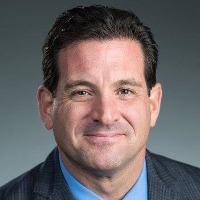In our last article, we discussed how much cash reserves you should keep as an individual investor and retirement planner. However, if you possess your own CPA practice, you’ll also want to consider how much cash your business should keep in reserves. In fact, failing to keep sufficient cash on hand can mean the difference between the success or failure of your business, even if you have plenty of clients.
In fact, many businesses fail not due to a lack of clients but rather through poor financial management. Now, you may be thinking that as a CPA, you needn’t worry about poor financial management as you yourself are an expert in finances. Well, on the one hand, that’s true. On the other hand, managing a business’s finances may be quite far afield from your specific area of expertise, especially when it comes to integrating your business’s finances into long-term financial and retirement planning.
| 82% experience cash flow problems |
| 42% find that there is an insufficient need for their product or service |
| 29% run out of cash |
| 23% do not have the right team |
| 19% are out-competed |
Without sufficient liquidity, you risk being unprepared for unexpected challenges, seasonal fluctuations, or opportunities for growth. On the flip side, holding too much cash could slow your practice’s expansion, preventing you from investing in marketing, hiring new staff, or upgrading technology. So, how do you strike the right balance between security and growth?
Why Cash Reserves Are Vital for CPA Practices
Handling Emergencies
Running a CPA practice comes with its own set of unique risks—such as client non-payment, unexpected technology breakdowns, or even a lawsuit, on top of the issues nearly all kinds of other businesses face: natural disasters, pandemics, and economic downturns. Your cash flow could go from great to non-existent within a matter of weeks through no direct fault of your own. You’ll still have to make payroll, rent, and insurance payments (as examples) to keep your practice solvent, which may be difficult to achieve if you don’t have easy access to funds. Failing to cover these expenses will inhibit your ability to serve your clients, which could lead to them going elsewhere for their needs, putting your company on a downward spiral from which it will be exceedingly difficult to climb your way out.
Navigating Seasonal Cash Flow Fluctuations
Many CPA practices experience predictable cash flow highs and lows. Tax season, for example, often brings a surge in revenue, while the summer months may result in slower client activity. Having reserves to cover operating expenses during off-peak times prevents you from scrambling for funds or dipping into personal savings. If this sounds like your practice, then you’ll likely want an even beefier reserve than normal. Imagine you have reserves to cover your essential expenses during the slow season, but then an emergency occurs. You’ll need another set of reserves for those kinds of costs.
Capitalizing on Growth Opportunities
Growth opportunities don’t always come at the perfect time. Whether it’s acquiring a competitor’s client list, upgrading your software systems, or hiring a high-performing employee, having cash on hand allows you to act quickly. Without reserves, you may miss these opportunities or be forced to take on debt.
How Much Cash Should You Keep on Hand?
The ideal cash reserve target for a CPA practice depends on factors like your expenses, revenue patterns, risk tolerance, and the size of your business. A general starting point is three to six months of operating expenses in reserves. If you’re a freelancer, you may find three months to be more than enough. If you have tens of employees, perhaps six months is closer to your ideal reserve amount.
Fixed vs. Adjustable Expenses
When determining your cash reserve target, categorize your expenses into two groups:
- Non-Adjustable Expenses: These include rent, software subscriptions, professional liability insurance, and salaries for essential staff. These costs are critical to your practice’s operations and must be covered, even during downturns.
- Adjustable Expenses: These include marketing budgets, bonuses, non-essential staff salaries, and discretionary expenses like team retreats. These costs can be scaled back in times of financial strain.
Let’s say you want to maintain six months’ worth of reserves. That would likely require a substantial amount of money. Instead of keeping six months of total expenses in liquid assets, you might consider splitting your reserves: three months’ worth of liquid funds to cover essential non-adjustable costs and scaled-back adjustable costs and another three months in less liquid, low-risk assets. The key is ensuring that the second set of reserves can be accessed quickly and easily if the need arises.
When Should You Tap Into Your Reserves?
Having cash reserves is a crucial safety net, but knowing when to tap into them is just as important. Reserves are best used for critical needs that keep your business running smoothly, such as covering payroll during a slow quarter, repairing essential equipment, or bridging cash flow gaps caused by delayed client payments. These are the moments when having reserves can protect your business from disruption and give you peace of mind.
On the other hand, it’s important to avoid dipping into your reserves for non-essential expenses, risky investments, or everyday operating costs that should be managed through regular cash flow. Using reserves frivolously can leave you unprepared for real emergencies, undermining the very purpose of having them.
Case Study: A CPA Practice Survives Unexpected Challenges
XYZ Tax Services, a mid-sized CPA firm with eight employees, maintains steady revenue most of the year but experiences cash flow challenges during slow months. To stay prepared for disruptions like delayed client payments or unexpected disasters, XYZ adopts a reserve strategy to maintain stability during tough times.
XYZ maintains three months of reduced expenses (fixed costs and scaled-back adjustable costs) to respond immediately to cash flow disruptions, plus three months of total expenses to sustain operations if disruptions persist.
The Numbers: XYZ’s Monthly Expenses
| Expense | Cost | Category |
|---|---|---|
| Rent | $3,000 | Non-Adjustable |
| Professional Liability Insurance | $200 | Non-Adjustable |
| Essential Salaries (6 employees) | $30,000 | Non-Adjustable |
| Marketing | $1,000 | Adjustable |
| Discretionary Expenses | $1,500 | Adjustable |
| Non-Essential Salaries (2 employees) | $6,000 | Adjustable |
| Total Monthly Expenses | $41,700 | — |
Crisis Hits: Slow Months, a Delayed Payment, and a Flood
In one challenging summer, XYZ faces:
- A delayed payment from a major client.
- Seasonal slow revenue months due to reduced client activity.
- A flood that damages office equipment, requiring urgent replacements and repairs.
Sticking to their emergency plan, XYZ immediately furloughed their non-essential staff and reduced adjustable expenses to 20% of their regular costs. With the excess cash, they rent out a temporary office, purchase new equipment, and focus on maintaining operations while repairing their regular office space.
First Three Months: Lean Operations
New Emergency Mode Monthly Expenses: $33,700
After stabilizing operations, XYZ transitions back to full spending to maintain long-term operations:
- Rent, insurance, and salaries for all employees are covered.
- Marketing efforts resume at full capacity to attract new clients.
- Discretionary expenses are restored to maintain team morale.
Total Spent (First 3 Months of Reduced Expenses): $101,100
Had they chosen to have three whole months’ worth of savings on hand, they would have needed $125,100 for the first three months. With a plan in hand on what to cut and by how much, they were able to free up around 24k in cash that could be used to develop their business further.
Other Considerations:
Growing Your Reserves
Cash reserves serve as a crucial safety net, but keeping too much idle cash can harm your practice by allowing inflation to erode its purchasing power. To balance accessibility and growth, consider splitting your reserves based on your unique situation and risk tolerance.
Start by keeping the first three months’ worth of reserves in highly liquid assets, such as an interest-bearing business savings account. This ensures the funds are readily available for emergencies while earning some interest.
The second set of reserves can be allocated to low-risk, slightly less liquid options like Certificates of Deposit (CDs), short-term bonds, or Money Market Funds. These options can provide higher returns while remaining accessible within a reasonable time frame. Ultimately, how you divide and manage your reserves should reflect the needs of your practice, your cash flow patterns, and your comfort with risk.
Separate Reserve for Retirement Plan Obligations
If your company offers retirement plan matching contributions, it’s crucial to set aside funds specifically for these obligations to comply with legal requirements and maintain employee trust. Missing contribution deadlines can result in penalties and erode employee confidence. If your practice needs to suspend matching contributions due to financial strain, you must notify employees and amend the plan documents, typically by November 15th for calendar-year plans.
Reviewing and Adjusting Your Reserves
Your practice’s financial needs will change over time. As your client base grows or your cost structure shifts, your reserve levels should evolve accordingly. Make it a habit to review your reserves during your annual financial review. Adjust the amount you’re holding to reflect any changes in revenue, expenses, or business goals.
In Conclusion
Building and maintaining a business is much like planning for retirement. Early on, the focus is on growth—thinking little about financial emergencies. But as your practice grows and you have more at stake, the priority shifts to protecting your hard-earned gains. Yet many business owners overlook one critical safeguard: maintaining sufficient cash reserves to handle financial crises without resorting to debt or drastic measures.
At CPA Retirement Solutions, we specialize in helping CPAs like you craft financial strategies tailored to your unique goals. Whether it’s optimizing your cash reserves, integrating your business finances with your retirement plan, or ensuring your practice’s stability through unexpected challenges, our team is here to help.











